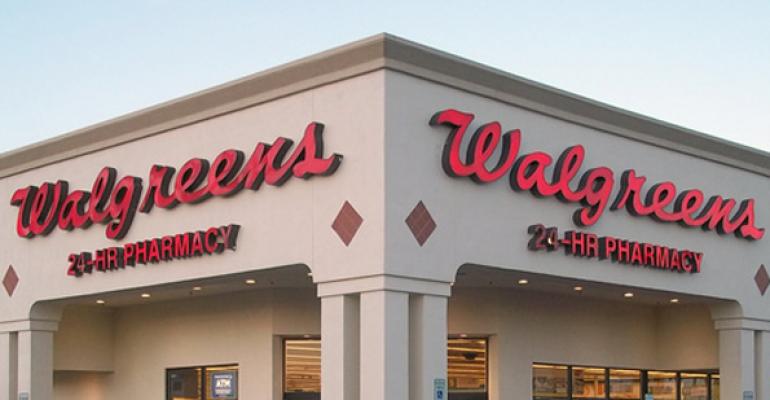The country’s two major drugstore chains, CVS Pharmacy and Walgreens, are not immune to the impact of Amazon, which is eager to get a slice of the lucrative pharmaceutical pie, and other online retailers.
“Drugstores are not internet-resistant retailers, and as such, they need to closely evaluate their products and service offerings in an effort to stay relevant with their customers,” says Lanie Beck, director of research at Stan Johnson Co., which specializes in net lease investments. “If they can’t find a way to draw consumers into their stores, they risk losing market share to companies like Amazon, Walmart and online prescription retailers.”
The good news is that the drugstore operators are not sitting back idly. In recent months, they’ve made big announcements regarding changes that they hope will position them for long-term growth.
If the roughly $69 million CVS/Aetna merger is finalized, it would solidify a partnership between a traditional retail pharmacy and a healthcare insurance and services provider that should ultimately help drive traffic to CVS’s stores, Beck says. Essentially, CVS is trying to position its stores as healthcare centers rather than just drugstores. That move could draw more customers to its locations.
“If brick-and-mortar drugstores adjust their offerings to include a healthcare service, for example, they could see their foot traffic increase, which may lead to consumers doing more of their personal goods shopping at the same store,” Beck says. “Convenience is still a significant influencer of customer behavior, and to be successful, retail drugstores will need to evolve.”
In another strategic move, the Walgreens Boots Alliance received the go-ahead from the U.S. Federal Trade Commission last year to acquire 1,932 Rite Aid stores for nearly $4.4 billion. Walgreens’ complete takeover of rival Rite Aid was scaled back due to antitrust reasons. Store purchases were to be completed in spring. Walgreens announced, however, that it will close 600 stores over the next 18 months. The stores slated for closure consist mostly of Rite Aid locations near existing Walgreens stores as the retailer seeks to optimize its footprint.
Meanwhile, there could also soon be new competitors entering the market. Giant grocery operator Albertsons Cos. agreed to purchase the 2,560 Rite Aid stores left out of Walgreens’ acquisition in an effort to drive traffic to its grocery stores and compete more directly with online retailers like Amazon, Beck says. The deal would expand the Rite Aid brand in Albertsons’ stores across the country.
While the prescription drug business at drugstores has been relatively stable, the front-of-the-store sales have been decreasing. Drugstores are becoming increasingly more convenience-oriented and adding mixed merchandising to help boost those sales.
“The idea is that you’ve got people in for their prescriptions or over-the-counter medication, and if you offer them something else, you can increase the size of the market basket,” says Dave Brennan, professor emeritus of marketing at the University of St. Thomas in the Twin Cities. “Particularly, they’ve added food and health and beauty aids.”
For example, CVS launched a new store design and recently opened a two-story, flagship store in Times Square in New York City. The store, which measures more than 13,000 sq. ft., offers more than 3,400 new products in health, beauty and healthy food options in addition to a CVS Pharmacy. It’s design to “enhance the retail customer experience,” according to a CVS spokeswoman.
Drugstore chains are also looking at more unique locations than they have in the past. Walgreens, for example, is opening a store at the Mall of America in Bloomington, Minn., to serve mall shoppers and employees, as well as people at the connected office building and hotels.
“Walgreens is an exciting addition to our eclectic mix of retail, entertainment and services at Mall of America,” says Carrie Charleston, vice president of leasing at Mall of America. “With the ever-changing landscape of retail, convenience and services continue to be not only a desire, but an expectation from guests.”
According to Brennan, the Mall of America’s more than 100,000 visitors a day mean there will be a lot of potential customers needing both prescription and over-the-counter meds. The store will also offer everyday items in the cosmetics and household categories and provide services like a photo lab. “Is that a place that’s going to drive people there? Absolutely not,” Brennan says. “It’s basically a convenience more than anything else.”
At the same time, Walgreens has also started opening upscale flagship stores in markets including Chicago and San Francisco that come with a café, wine with a virtual bartender, juice and sushi bars, as well as a beauty department with nail and eyebrow bars. That marks a departure from the company’s previous focus.




